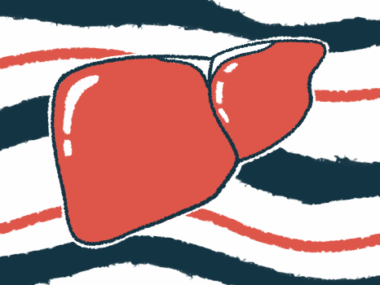New molecule to reduce liver scarring a potential PSC treatment
ASO 56 found potent in reducing liver fibrosis in mouse model of disease
Written by |

Researchers at the University of California San Diego (UCSD) have created a molecule, named antisense oligonucleotide (ASO) 56, that is able to potently reduce liver scarring, or fibrosis, in preclinical models of liver disease.
According to the scientists, ASO 56 was found to be effective in a mouse model of primary sclerosing cholangitis (PSC), a rare and potentially life-threatening liver disease characterized by inflammation and fibrosis in the bile ducts. Bile ducts are the series of tubes that carry the digestive fluid bile from the liver to the intestines.
The molecule originally was developed based on experiments done in preclinical models of another liver disease, metabolic dysfunction-associated steatohepatitis, known as MASH, which is a severe form of fatty liver disease marked by liver inflammation.
The scientists say the experimental therapy may be beneficial for both liver conditions. But they’re prioritizing its development for PSC first because the team expects it to be easier to get regulatory approval from the U.S. Food and Drug Administration (FDA) for that indication; there are no currently approved treatments for primary sclerosing cholangitis.
“Getting FDA approval for PSC would be easier than getting it for MASH, so we’re currently talking to biotech and pharma partners about licensing the ASO for PSC,” Jerrold Olefsky, MD, a professor of medicine at UCSD, said in a university press release.
Olefsky and colleagues described the development of ASO 56 and results from experiments in MASH models in a study titled “TM7SF3 controls TEAD1 splicing to prevent MASH-induced liver fibrosis,” which was published in Cell Metabolism.
Seeking to understand the mechanics of liver scarring
Fibrosis, the clinical term for tissue scarring, plays a central role in many liver diseases. When repairing a wound or tissue damage and creating a scar, cells produce high levels of collagen, a protein that helps form connective tissue. But when this process runs out of control in the liver, it can lead to irreversible liver scarring, known as cirrhosis, that interferes with its function.
Through a series of experiments in cell and animal models, the researchers here discovered a previously-unknown molecular pathway that controls collagen production — and, therefore, fibrosis — in liver cells. The newly discovered pathway involves three key proteins: TM7SF3, hnRNPU, and TEAD1.
All the molecules in the pathway were known, but no one knew if or how they interacted. … We put the pathway together.
The researchers showed that, under normal conditions, TM7SF3 keeps hnRNPU inactivated, and cells produce the standard version of the TEAD1 protein that is relatively inactive.
But under fibrosis-promoting conditions, TM7SF3 stops inactivating hnRNPU, and hnRNPU then triggers the production of a different, slightly shorter version of the TEAD1 protein that is much more active.
That shorter, active TEAD1 protein then promotes the activation of a type of liver cells, called hepatic stellate cells, that is known to drive liver fibrosis.
The same molecular mechanism was evident in both mouse and human liver cells, the researchers noted.
“All the molecules in the pathway were known, but no one knew if or how they interacted,” Olefsky said.
“We put the pathway together, showing each step in this intracellular signaling module,” Olefsky said.
Scientists create molecule ASO 56 after studies in mouse models
Based on their discovery, the researchers designed a new antisense oligonucleotide or ASO. Such medications work by binding to messenger RNA (mRNA), which is the intermediary molecule made from DNA that guides protein production.
The researchers noted that similar ASO-based technology was used to develop Spinraza (nusinersen), a treatment for the rare neuromuscular disorder spinal muscular atrophy (SMA) that has had transformative effects in patients.
Put simply, the newly developed ASO 56 targets the TEAD1 mRNA in a way that enables it to promote the production of only the standard TEAD1 protein, and not the fibrosis-promoting version.
The new molecule was shown to effectively reduce the production of the damaging, active version of the TEAD1 protein, and of fibrotic proteins, in lab-grown human liver cells and mouse-derived mini-livers.
In a mouse model of MASH, the scientists showed that the therapy, administered directly into the bloodstream as five injections over two months, worked as expected. It reduced active TEAD1 protein and hepatic stellate cell activation, ultimately resulting in a marked reduction of collagen content and liver fibrosis.
“We got pretty much only inactive [TEAD1] when we treated MASH mice with the ASO,” Olefsky said.
These data suggest that the ASO may be a useful treatment for MASH and other diseases that are driven by liver fibrosis.
In subsequent experiments, the team found that ASO 57 treatment resulted in a nearly complete prevention of PSC in a mouse model of the disease, making it a potentially promising therapy for that rare liver disease.






